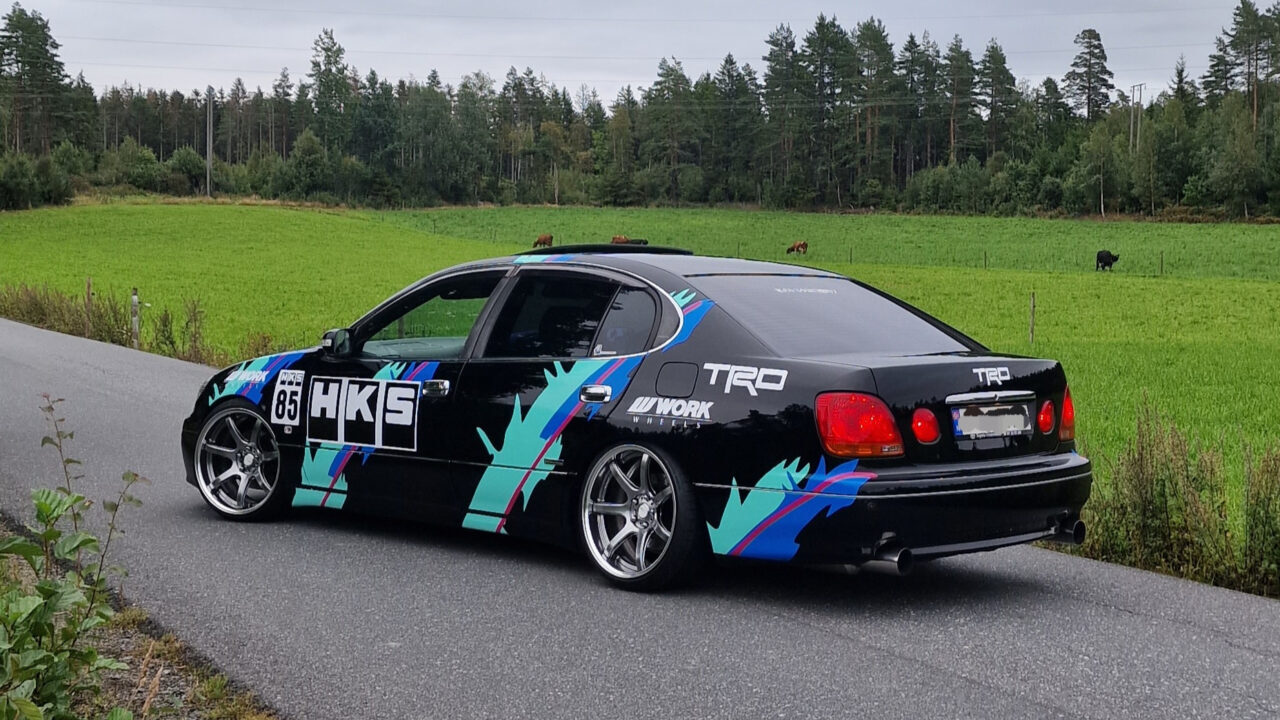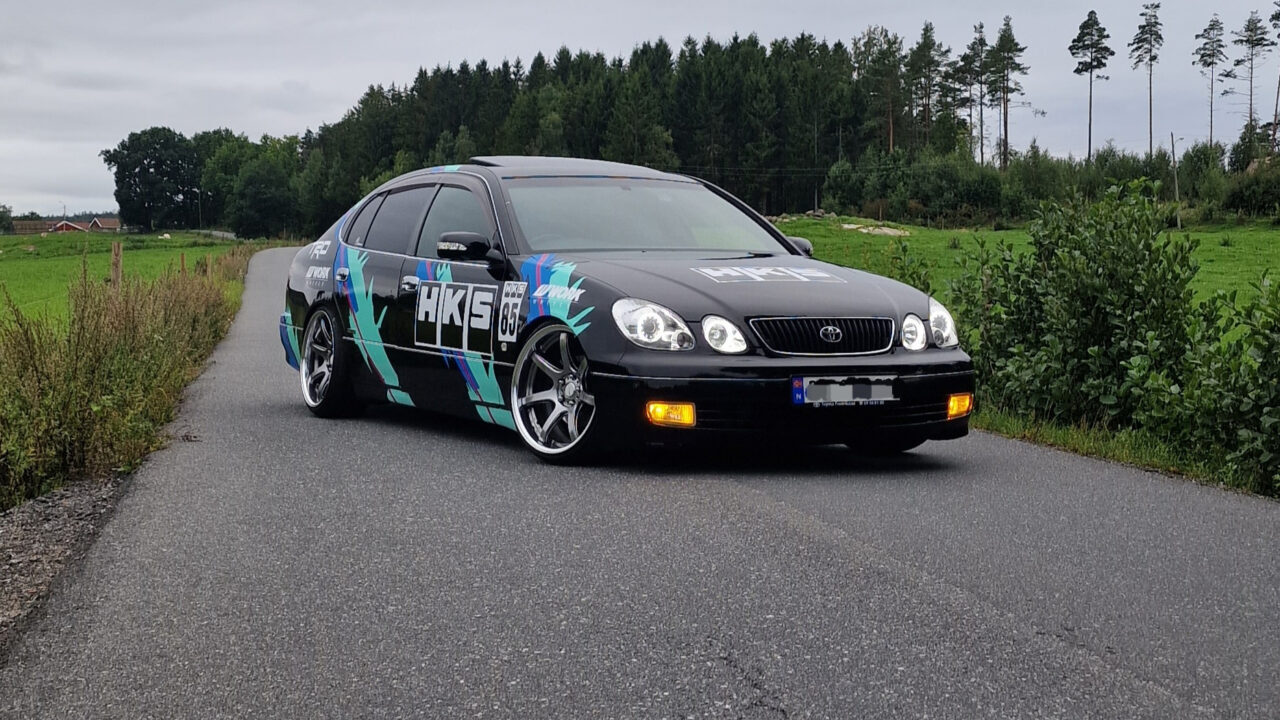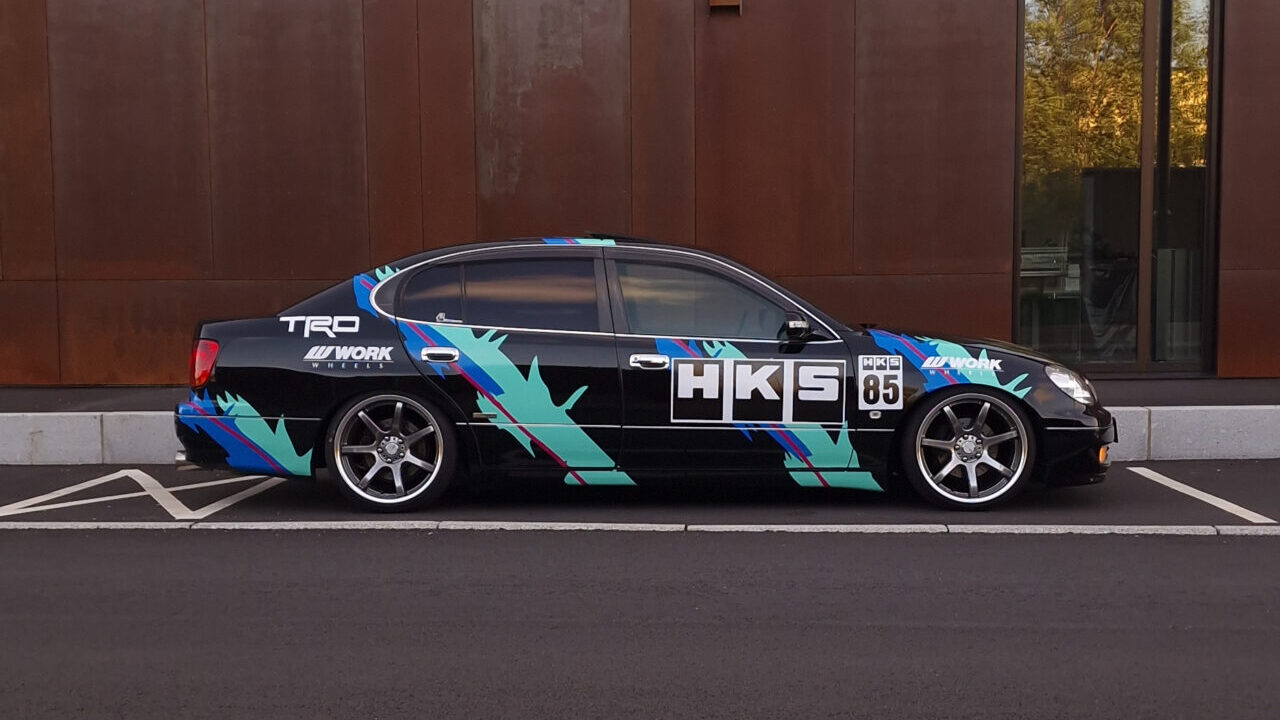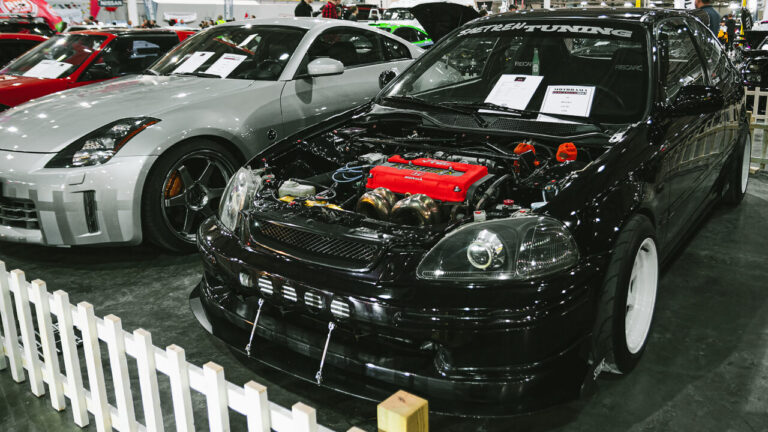
Philip Nowak, a 39-year-old motorcycle technician, allowed me to take a closer look at his 1999 Toyota Aristo.
This love story began online, as it often does these days — but in this case, it was a used car marketplace, not a dating site.
In May 2020, he sold a 2007 BMW E90 show car he had owned for seven years, which, for some car enthusiasts, is practically a lifetime.
Philip was innocently doom-scrolling through car ads on the internet with no real intention of buying a new car. He’d just bought a house that needed a serious renovation, so there wouldn’t be much time or money available for a new car project.
But we already know how this is going to end. Suddenly, the Aristo appeared on his screen, and Philip was, to put it mildly, fascinated.

After some research, he quickly discovered that it originally came with the legendary 2JZ-GTE VVTi engine. To this day, this remains one of the most impressive engines Toyota has ever produced and one of the most iconic powerplants from the Land of the Rising Sun.
On a Saturday in late May 2020, while everyone else was hoarding water and toilet paper due to a certain virus, Philip set off to take a closer look at the car. He was only supposed to check it out and maybe take a short test drive, but of course, he ended up taking it home.
Philip’s inspiration for this Toyota Aristo build is rooted in his love for stanced and lowered cars. The cars he had built previously were always pristine and shiny, but this time, he wanted to go in a different direction with a more race car-inspired style and livery.

Still, he didn’t leave his stance roots behind completely, as the first modifications were a drastic drop in ride height and wide wheels. A set of BC coilovers does a solid job of bringing the car closer to the ground, where it belongs.
The Work T7R2P wheels measure 19 inches in diameter and are a whopping 9.5 inches wide, with an ET12 offset. They are wrapped in rubber that’s about as thick as a few layers of electrical tape, and the sidewalls have a slight stretch for the proper look.
To fit the wheels after lowering the car, Philip had to gently massage the fenders. It’s done discreetly, so it’s not something you notice at first glance.
What you can’t help but notice, however, is the classic HKS livery we’ve seen on countless Japanese race cars over the years.
Maybe not something you’d expect on a four-door Toyota luxury sedan, but there’s no doubt it gives the car a distinct visual identity.
Inside, Philip’s Toyota Aristo remains mostly as it left the factory, but with a few noteworthy updates.
Since he converted the car from automatic to manual transmission, the center console has undergone some changes. All interior details are painted black, including the headliner, giving it a dark, yet sophisticated appearance.
Future plans for the interior include bucket seats to improve both aesthetics and driving experience.

Under the hood, you’ll find a mostly stock Toyota 2JZ twin-turbo engine. The only upgrades so far are an Apexi air filter and a custom exhaust to help the engine breathe a little better.
According to the vehicle registration paperwork, the engine delivers 280 hp, and when I ask about the boost pressure, Philip says it’s probably stock — because no one ever changes that, right?
I’m not entirely sure if that was meant ironically, but I can say with certainty that more engine upgrades are in the pipeline, as he plans to eventually make the move to a single turbo setup.
Since this is an older JDM car, the top speed is limited to 180 km/h — which is more than enough for Norwegian roads, but also a relatively simple thing to change.

We briefly mentioned that the Aristo was converted from automatic to manual. The current gearbox comes from a Mk3 Supra with the 1JZ engine and uses a custom driveshaft.
For this project, he built most of the components himself, including the clutch pedal and transmission mount. He also casually mentions that if the budget had been bigger, he would have preferred a 160/161 transmission from a Mk4 Supra.
The brakes are stock in size, but the discs are now drilled, and better, grippier pads have been installed. For the current engine setup, this is sufficient, but if the single turbo brings a ton of extra power, upgrading them further would be a good idea.
In conclusion, Philip Nowak’s Toyota Aristo is quite a unique sight. The mix of stance and race car styling is definitely not something you see every day, and as mentioned, the car is far from finished.
Philip would like to thank his brother Jan Fredrik Nowak, Jens Liane, Kim Andre Antonsen, and Erik Gjermundsen for their help and support throughout the build process.
If you want to follow the car’s progress, you can follow Philip on Instagram.
Specs:
Make: Toyota
Model: Aristo
Year: 1999
Engine: 2JZ-GTE VVTi, Apexi air filter, custom exhaust
Power: 280 hp
Boost Pressure: Probably stock
Top Speed: 180 km/h (JDM speed limiter)
Paint: Original with custom HKS liveHKS Livery Toyota Aristo.ry
Interior: Mostly stock, modified center console for manual conversion, black-painted headliner and trim
Suspension & Brakes: Drilled brake discs and upgraded pads
Wheels: Work T7R2P 19×9.5 ET12
Did you like this article?
Make sure you follow us on Facebook for more builds, guides, and car culture content.







